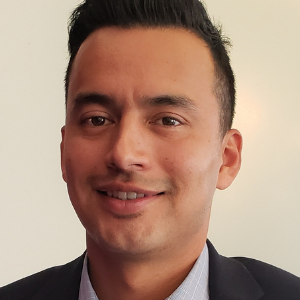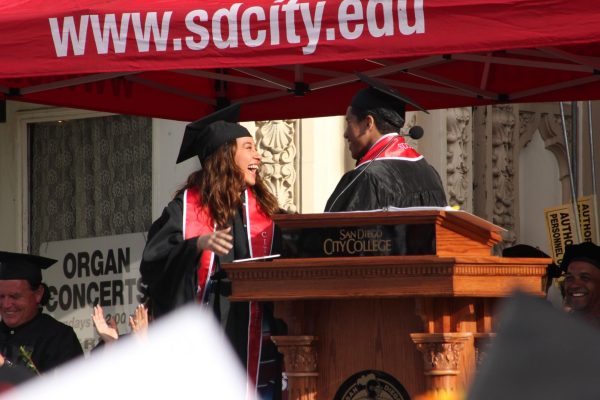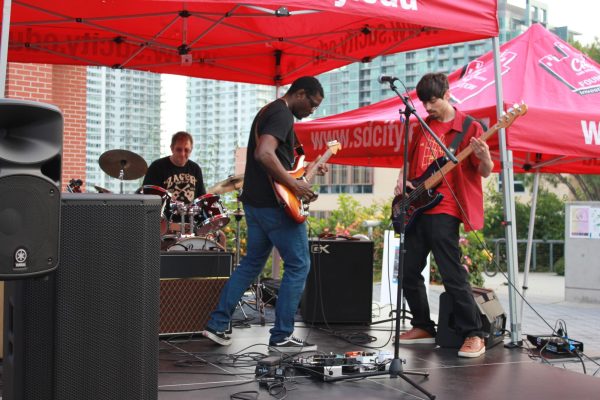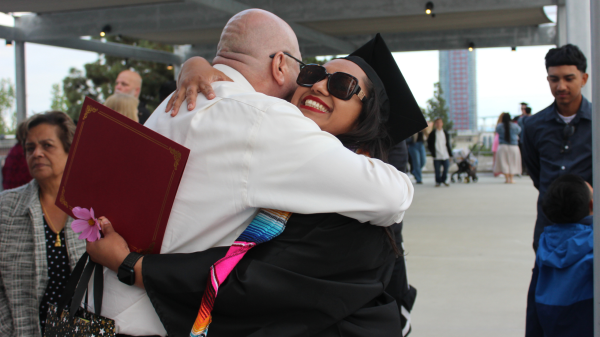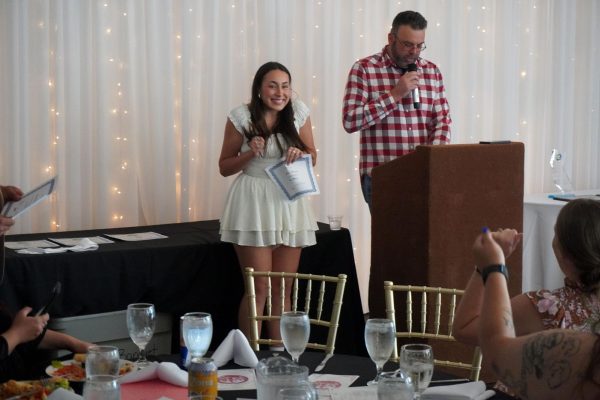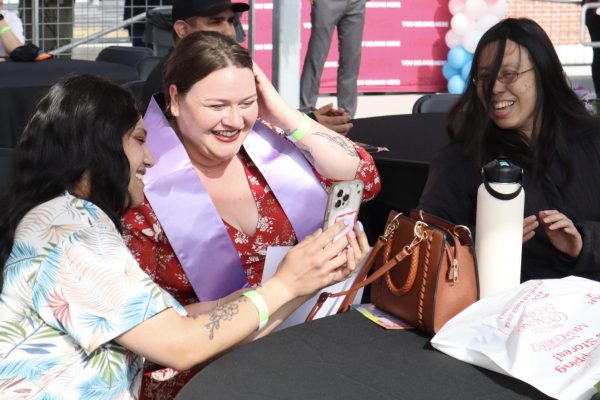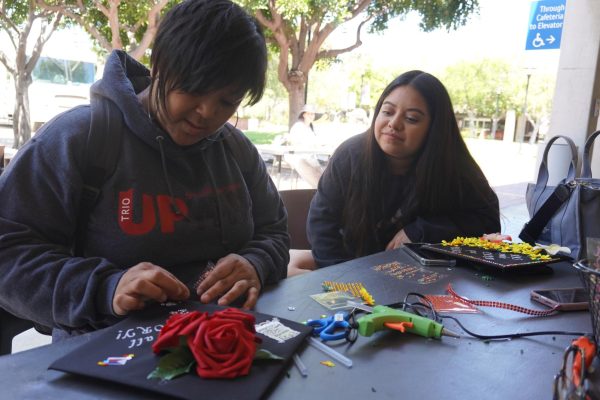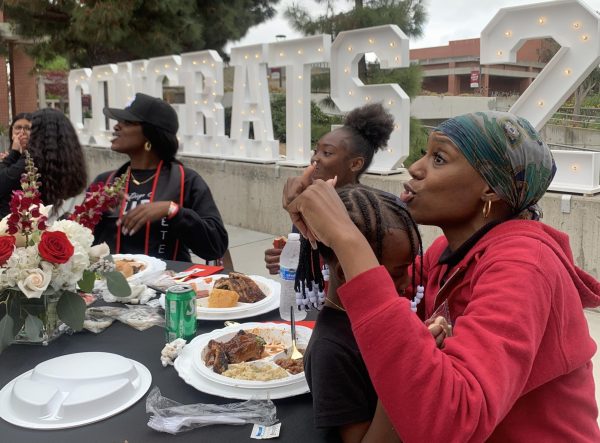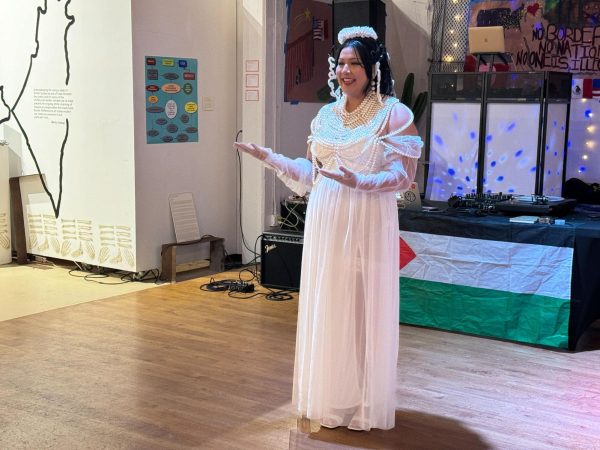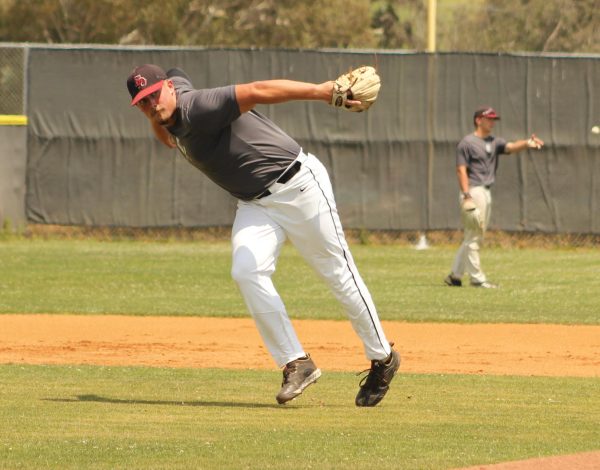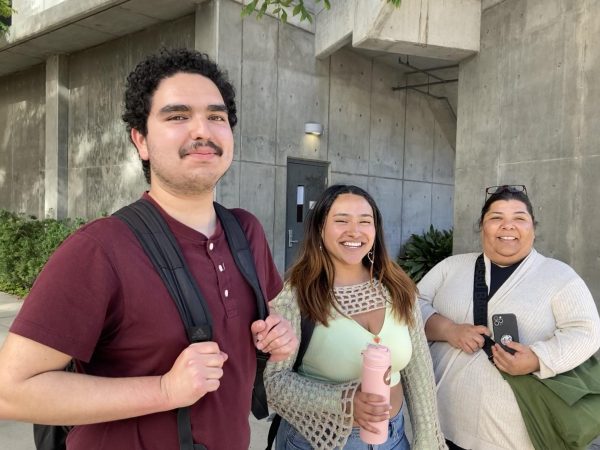City science club navigates need for culturally relevant integration
SD SACNAS chapter perseveres through pandemic hurdles
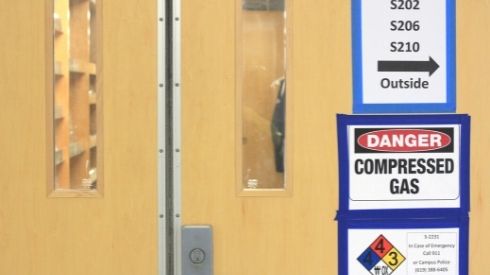
The closed lab doors of the S building at City College. Photo by Will Mauriz/City Times Media
December 14, 2021
Correction: This story has been changed to reflect that Shalayah-Naomi Webb is the secretary of SACNAS and the fellowship she was involved in the Patti Grace Smith fellowship, not the Patty Gray fellowship. More information can be found at pgsfellowship.org. City Times regrets the error.
The large windows of the S Building on the San Diego City College campus allow for lots of natural light to illuminate the four floors of primarily empty hallways due to limited in-person classes.
For now, the lab doors are closed and community spaces sealed off. However, these inaccessible spaces are not the single pathway to science, technology, engineering and math (STEM) at City College.
The passion in the science community at City burns brightly, but the impact of COVID-19 and the transition to remote learning brought additional barriers for students already facing challenging circumstances.
Club members of the Society for Advancing Chicanos and Native Americans in Science (SACNAS) find support in each other as they give back to their community.
“There is life that happens outside of the classroom that affects students’ ability to even be present for the STEM classes, and STEM takes a lot out of a person,” San Diego City College SACNAS chapter president Dyani Melgarejo said. “We need the support of a community or place to study without distractions.”
https://www.instagram.com/p/CXEwvikP5U6/
At City, statistical data from the census data from Spring 2021 shows a student population of 46% Latinx and 9% African American, which has not historically deviated greatly since its tracking started in fall 2016. However, Associate Professor of Physics and Astronomy at City College and advisor to SACNAS San Diego chapter Lorenza Levy said these percentages do not represent the number of students of this demographic that complete degrees and continue in the path of STEM.
City College’s recognition as a Hispanic-Serving Institution, which can be read about further in City Times, has attracted new HSI funding, which has been allocated to future projects such as new study spaces.
“Some of the money goes towards creating cohort classes to a science course paired with a Chicano or an ethnic studies courses, and that piece leads to the core of SACNAS,” Levy said. “That representation matters. When you see scientists that look like you and talk like you and share the same background, you feel more represented.”
Levy stated that making courses and the system more culturally relevant is a challenge and is better serviced by enhancing the programs available to students, and funding is a large component as the schools that receive more funding have higher retention rates.
“All my cohorts are so special,” Levy said. “There is so much on their plate as students with working usually multiple jobs, but the activities in the club are always driven by them.
“This cohort is super special because it’s my pandemic cohort. We had to transition, we had to pivot, the whole world had to pivot.”
SACNAS members like environmental engineering major Anahi Mendez Lozano created change, despite the pandemic challenges, finding commonalities in the collaborative partnership with City’s Audubon Club.
Lozano, who is originally from Tijuana, Mexico, grew up with some cultural barriers to the sciences. She had exposure in school but it was not prioritized and she was discouraged to participate.
“I remember when I was a child I wanted to be an archeologist,” Lozano said. “A lot of my family said you will never find a job. I never thought I could be a scientist.”
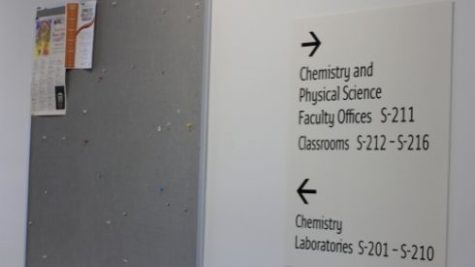
After moving to San Diego in 2016 from Seattle, she recalled receiving a City College course catalog in the mail, browsing the different classes like geology and gardening.
That is when she became aware an environmental engineering degree was even a possibility.
Growing up camping and hiking in Seattle forests, she ignited a passion for the outdoors and gardening. She was primed for an environmental engineering career.
Lozano currently has an internship with the Open Space department with the City of San Diego, which is trying to preserve land and species in San Diego County.
“The more I started volunteering, doing internships, joining clubs like SACNAS,” she said, “and collaborating with the Arboretum Club and meeting more people in these types of careers,” she found communities to motivate her in her pursuits.
Lozano has kept motivated with involvement in a conservation project during the COVID-19 lockdowns in the San Diego Audubon Society Native Seed Libraries seed project.
“I am a first-generation college student,” said Melgarejo, who is planning on becoming a medical physician. “No one in my family expected to pursue medicine, no one had expectations for me to make it to this point, I do not have a lot of help from my family.“
Melgarejo considers herself a non-traditional student at City College as she has a bachelor of arts already, but began her journey into science after she decided to investigate becoming a midwife.
She found more resources to create change in her community as being a medical professional and changed her path dealing with stereotypes along the way.
“For me I am Latina, I am adopted, I am queer and also a parent, and a lot of those things, maybe not the adopted part, feeling like maybe subliminally not belonging,” Melgarejo said. “But I have many identities and it is hard to see representation in the field.”
Melgarejo stated that when she entered jobs, internships and labs there was a sense of preconceptions of who she was.
“When I was growing up I did not see myself as a scientist, as a woman of color,” Melgarejo said. “I found my place in SACNAS. I always struggled throughout my life to find a place of belonging and SACNAS has given me that – that opportunity for leadership and growth.”
Student Shalayah-Naomi Webb, the secretary of SACNAS SD and an aerospace engineering major, has seen herself growing up to be a chemist.
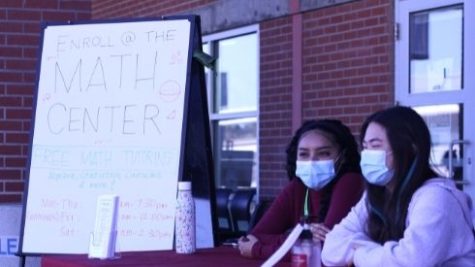
She grew up in the South Park area of San Diego and never left. She has been part of SACNAS for two years and handles social media for the club.
Webb experienced SACNAS as a club prior to COVID-19 and has seen major changes since the pandemic shutdown.
“Transitioning to this online modality, SACNAS, has helped ground me a lot and give me a sense of community, even though we are not in the same room,” Webb said.
She is a recipient of the Patti Grace Smith fellowship, which enabled her to get a student mentor from San Diego State University and an industry mentor who works for Ball AeroSpace.
Webb attributes her inspiration and drive to joining the NASA Community Colleges AeroSpace Scholars and campus clubs like SACNAS.
“I enjoyed building leadership skills,” Webb said. “It helped my speaking and networking skills and helps with your personal and academic growth.”
Anyone interested in the science community or interested in learning more can check out the City College chapter of SACNAS at the link here or check out the spring 2022 catalog of classes here.


